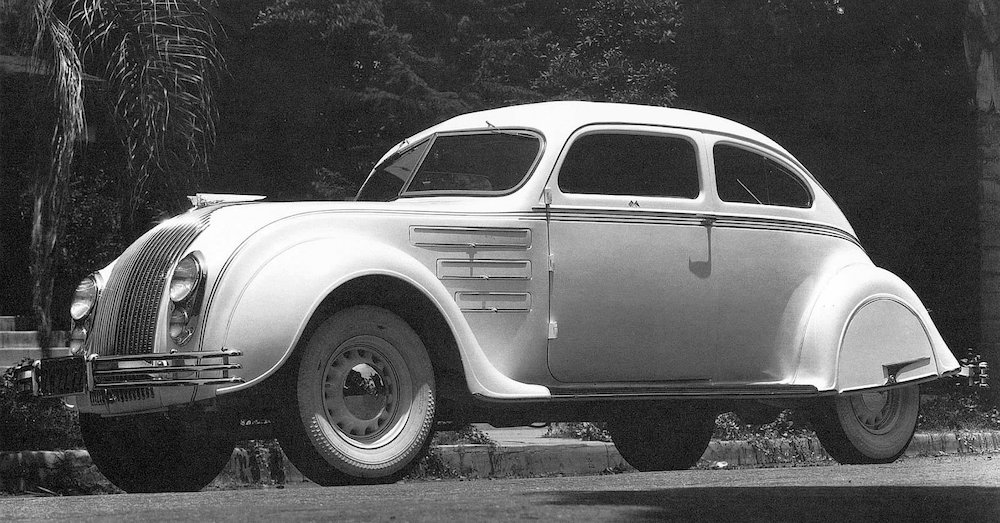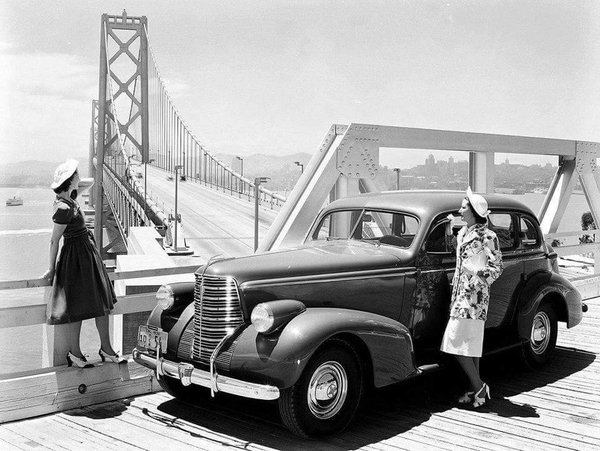Why was this the case? It happened that GM engineers, in particular "Boss" Kettering, thought that headlamps embedded in fenders would be subject to being put out of alignment if the fender was damaged by a collision. This is true. Whether this was truly a major problem or just a comparative rarity is probably debatable in any absence of insurance data.
Actually, GM headlight styling was aligned with most of the rest of the industry until about 1939. Perhaps accepting Earl's dominance, or perhaps due to tooling cost considerations, many other firms retained separate headlamp housings through 1938. Nevertheless, Earl had wanted integral headlights long before, and could cite 1936 Lincoln Zephyrs and 1937 Fords as competitors leading the way he wanted to go. Finally he got what he wanted.
General Motors' mid-range Oldsmobile is used as the example shown below.
1932 Oldsmobile
Nearly all American cars looked something like this in 1932.
1933 Pierce-Arrow - Bonhams photo
For many years Pierce Arrows had headlights perched atop front fenders as a visual trademark. For 1933, they were partially embedded.
1933 Oldsmobile Eight
Oldsmobiles got new bodies for 1933 when streamlined appearance was starting to become a style fashion. Headlamps were placed in aerodynamic-seeming housings that sat on posts.
1934 Chrysler Airflow
Airflow design was wind tunnel tested. Headlights are embedded in the car body. Other Chrysler Corporation models followed General Motors practice until 1939.
1934 Hupmobile
Hupps were less-streamlined, but headlights also were faired into the body.
1934 Oldsmobile
For '34, Olds headlamp housings were more teardrop-shaped.
1935 Oldsmobile Six
Headlight housing attachments moved from posts to the sides of the body. The background in the photo is San Francisco's Golden Gate Bridge under construction.
1936 Oldsmobile Six
No real change for 1936.
1937 Ford
Headlights are nested in the catwalk area. This is similar to 1936 Lincoln Zephyr practice. At this point, General Motors frontal designs began to look dated.
1937 Oldsmobile Six
Meanwhile, Olds headlights were still free-standing, attached to the hood area.
1938 Oldsmobile Eight
Now headlight housings are on the catwalk area, but remain separate elements even though they are very slightly integrated at their bottoms. In the background is the new San Francisco Bay Bridge.
1939 Oldsmobile Six
Housings are moved ever-so-slightly down into the catwalks. Meanwhile, many non-GM brands including Nash, Studebaker and the entire Chrysler Corporation line have headlights buried in front fenders.
1940 Oldsmobile 90
Headlight housings became more deeply buried for 1940, but only about halfway so.
1941 Oldsmobile
Finally GM headlights are fully integrated into the body shape.
1942 Oldsmobile B-44
Some GM brands had headlights placed near the fender edges for 1942, but Oldsmobile stylists held off until the 98 series was redesigned for 1948.




















































